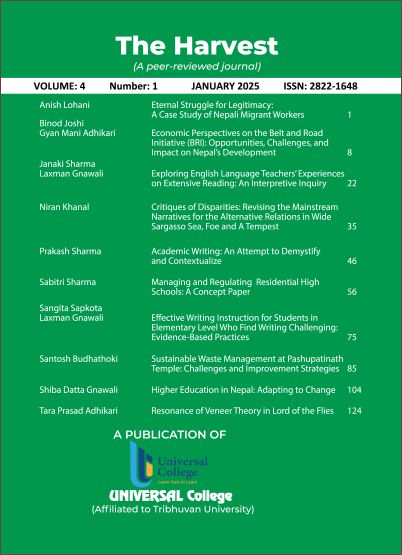Sustainable Waste Management at Pashupatinath Temple: Challenges and Improvement Strategies
DOI:
https://doi.org/10.3126/harvest.v4i1.75353Keywords:
solid waste management, pashupatinath temple, biodegradable waste, public awareness, recyclingAbstract
Solid waste management (SWM) is a critical issue in urban areas, particularly in cultural and religious hubs like Kathmandu, Nepal. The Pashupatinath Temple, a UNESCO World Heritage Site, faces immense pressure due to millions of visitors, especially during festivals, leading to increased waste generation. This study aimed to identify the types and quantities of solid waste generated, assess existing waste management practices, and explore methods for improving sustainable waste management at Pashupatinath. Using purposive sampling, 100 respondents, including pilgrims, shop owners, and temple staff, were surveyed. Data collection involved structured surveys, Likert scale questionnaires, and stakeholder interviews. Quantitative data were analyzed using descriptive statistics, while qualitative data were thematically analyzed. The results showed that biodegradable waste accounts for 52.15% of the total, followed by non-biodegradable waste (31.19%) and recyclable materials (16.66%). Shop owners generated the highest amount of waste (1.03 kg/day), followed by Pujaris (0.32 kg/day) and pilgrims (0.11 kg/day). Municipal collection was the primary disposal method (60%), but open dumping (10%) and burning (10%) were still common. Satisfaction with waste bins and regular collection was moderate (mean scores of 3.2 and 3.0), while awareness programs scored low (mean 2.5), underscoring the need for better public education. The study concludes that improving waste segregation, enhancing composting and recycling, and increasing public awareness are essential for better waste management at Pashupatinath. Collaborative efforts among religious leaders, local authorities, and the community are crucial for implementing these sustainable practices.




